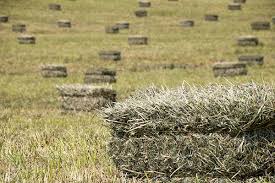
Picture Courtesy: Hay & Forage.com
Many livestock producers in North Dakota are short on forage following a long, cold winter and late spring that depleted forage supplies says Miranda Meehan, North Dakota State University Extension livestock environmental stewardship specialist.
Supplies in some areas have been further exasperated due to low forage production, resulting from cool temperature and drought.
In other regions, livestock producers have surplus forages, as a result of ample, timely rains.
“In addition, many farmers planted cover crops on prevented plant acres to increase water use and manage weeds,” says Meehan. “There is the opportunity to market these annual forages to livestock producers, due to the U.S. Department of Agriculture’s Risk Management Agency revision to the prevented planting insurance provisions, allowing producers to hay or graze a cover crop on
prevented plant acres beginning Sept. 1.”
Farmers and ranchers who have feedstuff such as hay, cover crops or corn for sale can list it on NDSU’s FeedList website, which is designed to connect feed sellers and buyers. Producers also may list pasture they have for rent.
The FeedList, at https://www.ag.ndsu.edu/feedlist, shows what each seller has for sale, how the feed is stored (large round bales, small bales, etc.) and the seller’s contact information. Prospective buyers can select what they want to buy and contact the sellers. Using the FeedList is free of charge.
Anyone who wants to buy or receive, or has feed to sell or donate can complete an online form at the site. Those who need entry help can contact an NDSU Extension county office. Visit https://www.ag.ndsu.edu/extension/directory to find a local office.
All entries will be deleted automatically after 90 days. Buyers and sellers who no longer need the FeedList’s services before that should contact the Feedlist coordinator, Elizabeth Cronin, at elizabeth.cronin@ndsu.edu to have the entry removed.
The FeedList website also has links to similar services in other states and information on needed and available feedlots and truckers.
The FeedList is a valuable resource to link buyers and sellers of feeds that has been available to aid producers facing feed shortages since the late 1970s.
